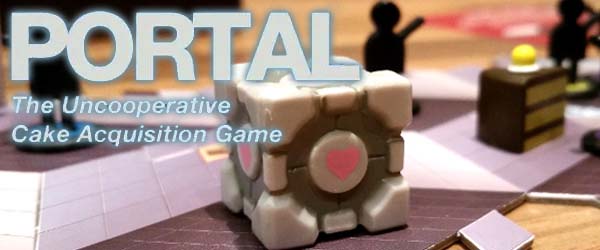
Portal is one of the best and most successful video games ever made. In the current climate of table top board game manufacturers trying to license every property that they can possibly get a hold of, I guess it only makes sense that there would have been a board game based on the Portal video game. But what could a board game designer possibly do with the physics and gravity-bending environmental puzzle-solving concepts of the 2 Portal video games? Cryptozoic's answer was to not even really try. While they did manage to come up with a unique and novel board game design, it's a design that I don't feel really does justice to the title's namesake.
You will be tested, and then there will be cake
Portal: The Uncooperative Cake-Acquisition Game is based around a modular, evolving board concept. 15 tiles are placed on the table in three rows of 5. At the end of each player's turn, one tile is removed from the right edge of the board (the "Old Edge"), flipped over, and moved to the left edge of the board (the "New Edge"). If a player controls a majority of the test subject pieces in the removed tile, he or she is given a set of rewards printed on the tile. This may include being able to place additional test subjects in order to establish more control over the board, being able to place or move a turret or Companion Cube figurine, or placing a victory point token on the board (which takes the form of a plastic slice of cake).
Any player piece(s) on the removed tile are also destroyed. Test subjects are returned to the respective player's supply, but any cake slices (which are victory points) are placed in the "Incinerator", and are removed from the game permanently. The objective of the game, thus, is to place as much cake on the board as you can, while also trying to keep that cake away from the old edge of the board so that it does not become incinerated. What makes this a somewhat challenging puzzle to solve is that the conveyor belt nature of the board is constantly pushing everything towards incineration.
Tiles move from one end of the board to the other, like a conveyor belt.
Each players' test subject tokens can pick up a piece of cake (belonging to any player) and carry the cake with it when the test subject moves. This is how players protect their own cake from the incinerator, but it also allows other players to pick up a rival's cake and move it closer to being incinerated. Thus, the competitive and subversive element is introduced. Players must try to maximize their own resources, while simultaneously trying to minimize their opponents' resources.
Oh, and there's also a couple of portal tokens which allow test subjects to move long distances across the board (and potentially take cake with them). And there's also a GladOS cardboard cutout, which does absolutely nothing except to mark which test chamber tile is being incinerated and recycled. The actual portals in the game's namesake, and the primary villain of the games, thus feel under-utilized. The portals just provide an extra opportunity for long-distance movement, but the game is completely playable without including them at all. They aren't even remotely necessary -- let alone fundamental -- to the board game's design, the way they are in the video game.
Turret and Companion Cube are nice 3-D plastic models,
but GladOS is just a cardboard cutout.
It's also a shame that the GladOS token is not a 3-D plastic model. The turret and Companion Cube are both plastic models and look really nice, so it's a shame that GladOS didn't get the same treatment. If she had, I could easily see this game's pieces becoming part of a nice little display diorama on a shelf somewhere when they are not in use for actual play.
In general, the board game lacks the spatial puzzle-solving element of the video game. The board is constantly in flux, and so a large focus of the game is on manipulating the physical space of the game board, and there is a certain degree of spatial-puzzle-solving present. But from my experience, most of that manipulation feels pretty rote and predictable. While there are certainly the occasional opportunities for really creative plays (especially when ability cards are used to modify various game rules or give the player extra powerful actions), the bulk of the game is pretty straight-forward.
[More]
4d8c2ed3-71aa-4dfa-8725-7de9aa00df1f|0|.0
Tags:Portal, Portal: The Uncooperative Cake Acquisition Game, Portal 2, Cryptozoic, Valve, Steam, GladOS, Cave Johnson, Chell, laboratory, test chamber, cake, turret, Companion Cube, Matt Hyra
The first season of The Mandalorian seems to have unnecessarily gotten my hopes up for the future of Star Wars on Disney+. Every Star Wars show since has been a disappointment to some degree, with the possible exception of The Bad Batch (which I never got around to finishing). At best, they have been watchably acceptable. At worst, they've been boring slogs.
Call in the fan service calvalry!
The 2nd season of Mandalorian falls into the "acceptable" category, though it was a substantial decline from the first season. I like Mandalorian's first season specifically because it felt new and fresh, and wasn't reliant on excessive fan service. It expanded the Star Wars universe, instead of making it feel like there's nothing going on beyond Emperor Palpatine and the Jedi. But we knew that Mando was looking to dump The Child off on a Jedi, so it was eventually going to intersect back with Jedi storylines eventually.
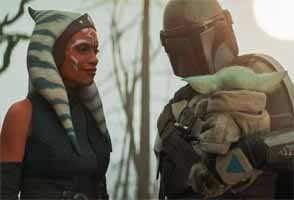 The Mandalorian © Walt Disney Corp.
The Mandalorian © Walt Disney Corp.
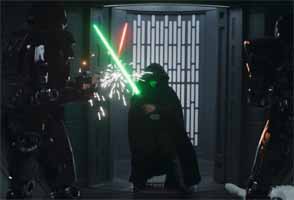 The Mandalorian © Walt Disney Corp.
The Mandalorian © Walt Disney Corp.
It should have been obvious that Mando's storyline would eventually intersect with Ahsoka and/or Luke.
And that's exactly what happened in season 2. I was OK with the appearance of Ahsoka and Luke. Mando was, after all, looking for Jedi, and as far as Star Wars fans know, they are the only 2 Jedi left alive in the galaxy. So of course Mando was going to find one, the other, or both of them. Ahsoka herself was a really cool character who was well cast. Her cameo was about the only one that I genuinely enjoyed, in large part because the episode that she was in is one of the strongest episodes of the season. Luke showing up as a deus ex machina at the last minute to save the day was frustratingly cliche, but tolerably so.
And that wasn't even the end of fan service cameos in Mandalorian season 2. This one season also threw in R2-D2, Bo Katan, Boba Fett, and Dark Troopers. Forgive me if I missed anything. It was ... a lot.
On the other end of the spectrum, is The Book of Boba Fett, which is all fan service all the time. Boba's appearance in season 2 of Mandalorian was, in my opinion, the worst part of Mandalorian. When rumors of Disney wanting to make a show about a Mandalorian bounty hunter started going around, it was assumed that the show would be about Boba Fett. I hated the idea. Boba Fett should have stayed dead. When it was revealed that the show would be about a different, new Mandalorian character, I was less annoyed. I was relieved that it wasn't more Star Wars fan-fic circle-jerking.
[More]
b15ed1a9-b8c3-476d-9ff5-6da1052450b6|1|5.0
Tags:Star Wars, Disney Plus, streaming television, The Mandalorian, Book of Boba Fett, Obi-Wan Kenobi, Boba Fett, Bad Batch, Grogu, Ahsoka Tano, Luke Skywalker, Bo Katan, Darth Vader, Cad Bane, Grand Inquisitor, Third Sister, plot armor
The Northman © Universal Pictures.
The Northman was another Hollywood movie that I wanted to see in theaters but missed. Just like The Last Duel, even if the movie ended up being bad (which they weren't), I wanted to see it in theaters to support the continued production of movies like this -- movies that aren't just another in the endless onslaught of comic book movies and nostalgia reboots from the late 80's and 90's. I want Hollywood to keep making these sorts of serious historic dramas.
But I haven't been to a movie theater in over 2 years thanks to the COVID pandemic. I would have been willing to go to the theaters for this (as well as for The Last Duel), but stuff kept coming up. We kept putting it off until, before we knew it, The Northman was out of theaters. But I'm no hypocrite. I also haven't seen any comic book movies in theaters either. I waited to see Spider-Man: No Way Home and The Batman until they were on streaming, and I still haven't seen Multiverse of Madness.
Much like The Last Duel, Northman is a brutal and dirty movie. Nobody gets blood-eagled, but there is plenty of violence, both grotesque and cathartic. Even the non-violent parts of the movie are grotesque and intense. Grown men built like trucks scream at each other, dance around, and even occasionally cry. This movie is constantly bombarding the audience with weird stuff, and it's all mesmerizing.
Northman threads a fine line between completely believable historical fiction and some mythological elements. On the one hand, I would believe the movie if it told me that it was inspired by true events. On the other hand, it's never entirely clear if the mythological content is actually supposed to be interpreted as really happening, of if they simply reflect the characters' belief in their gods and magics. Either way, the gritty, dirty, realistic settings are occasionally juxtaposed with beautiful and imaginative fantastical imagery.
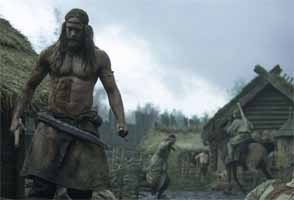 © Universal Pictures
© Universal Pictures
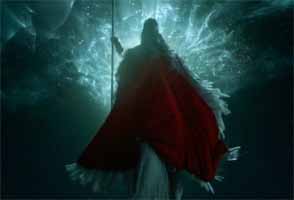 © Universal Pictures
© Universal Pictures
The gritty, realistic setting is juxtaposed with imaginative fantastical imagery.
[More]
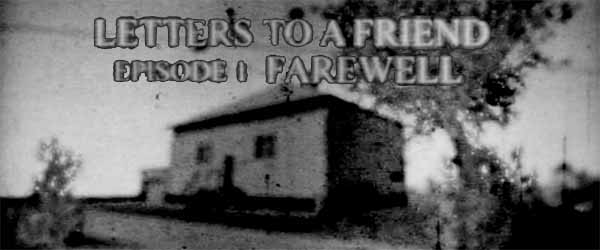
When I saw Errant Signal's video essay about Letters To A Friend: Farewell, I was instantly intrigued. Even watching someone else's footage, and not actually playing myself, the exceedingly grainy camera had me seeing things that weren't there, constantly wondering if something was going to pop out of the shadows. In a slow-burn psychological horror title like this, that kind of constant tension really helps to set a mood and elevate the emotional response to the game, and I wanted to experience it for myself.
Letters To A Friend is a short, 30 to 40-minute indie horror game with a unique silent film aesthetic. Aside from ambient background music, there is no dialogue and no sound effects. All the spoken dialogue and inner monologue of the player character are conveyed through text displayed on static title cards. The entire game is played in monochrome, with a heavy vignette and film grain effect.
Letters To A Friend is absolutely committed to its grainy silent film aesthetic.
The plot is about a notary who goes to a house so that the owner, Markus, can sign away his rights to inherit the property after his father had recently passed. Markus begins rambling, claims he can't find the key to the locked attic door, the time grows late, and the notary is asked to stay overnight in the study, so that Markus can find the key and sign the paperwork the next morning. The notary agrees, only to have his sleep disturbed by weird noises and odors, which are all described in text on title cards. Something is not as it seems.
I don't want to go into further detail right away because speaking any further about the plot or themes of this 40-minute story would completely spoil it. This game is short even by walking sim standards, but on the upside, at least it gets straight to the point without burying its meaning in layers of confusing metaphor and symbolism, as many walking sims are prone to do. This game is only available on itch.io, and its recommended price is $5.99 USD, but since it's on itch, you can opt to pay more if you want to help support the developer. Personally, I paid an even $7 USD. If you don't mind short, indie walking sims, and the silent film aesthetic looks interesting, then I recommend checking this game out and playing for yourself. Then feel free to come back and read the more spoiler-y details of the review and analysis. [More]
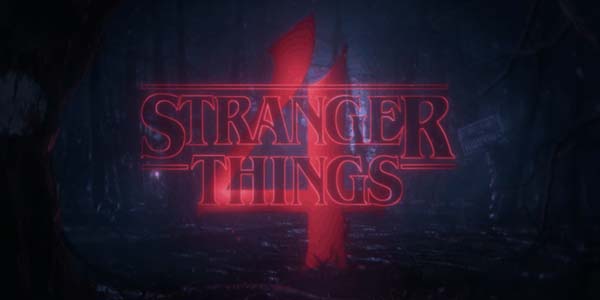
I never bothered reviewing the 3rd season of Stranger Things because I didn't really have strong feelings about it one way or the other. Season 3 was a bit of an improvement over season 2, but both were a resounding "meh" for me. The first half of season 4 is also kind of "meh", but I think that it's worth talking about this time around because it both succeeds tremendously where seasons 2 and 3 failed, but also then kind of ruins any goodwill that it had built up.
The fundamental problem that I have with Stranger Things after the first season is that a continuation of this same story simply doesn't need to happen. The first season worked so well, in large part, because of its intriguing mysteries. Aside from sequel bait, all the important questions and mysteries of season 1 were solved, and the first season felt satisfactorily resolved. If this show was going to have sequel seasons, then I think a more anthology-like approach would have been more appropriate, with each new season telling a new story, with new characters, confronting a completely new and unrelated horror, and solving completely new and unrelated mysteries.
By continuing with the same story, the audience gets to bring everything we know from the first season into the new story. Even though seasons 2 and 3 went in their own directions and took different inspirations compared to the first season (season 1 being kind of Twin Peaks meets E.T., season 2 being inspired by Aliens and Terminator, and season 3 being a play on a Body-Snatchers concepts), neither season 2 nor 3 introduced anything tremendously new. There wasn't much mystery because the workings of the Upside Down, the mechanics of the demogorgons, and the machinations of the secret government labs were all established. Season 3 shakes things up a bit with a body-snatchers plot and an ending that actually destroys the status quo and moves our characters forward with their lives, and is perhaps the only reason that season 3 did not feel quite as stale (for me) as season 2 did. But the fundamental problem was still the same: we've seen all this before, more or less.
Season 4's "monster of the week" approach feels fresh and new.
This is where season 4 kind of shines. It's new monster, Vecna, isn't just another demogorgon. He's something that feels completely new and threatening. His motivations are unknown, and despite being explicitly inspired by Freddy Krueger, the mechanics by which he operates are completely new compared to the previous monsters. This finally gives our characters an actual mystery to solve. For the first time since season 1, the threat of Stranger Things is finally mysterious and unknown again. [More]
|

| 12 | | | | | | | 60 | | 11 | | | | | | | 55 | | 10 | | | | | | | 50 | | 09 | | | | | | | 45 | | 08 | | | | | | | 40 | | 07 | | | | | | | 35 | | 06 | | | | | | | 30 | | 05 | | | | | | | 25 | | 04 | | | | | | | 20 | | 03 | | | | | | | 15 | | 02 | | | | | | | 10 | | 01 | | | | | | | 05 |
|